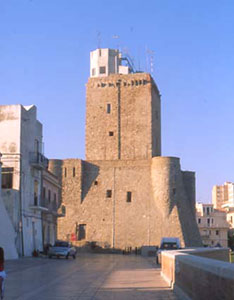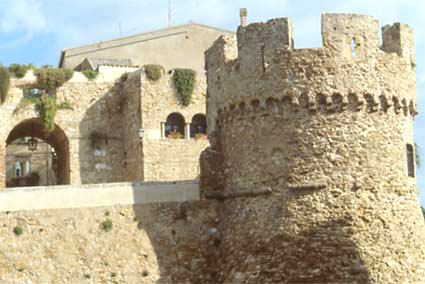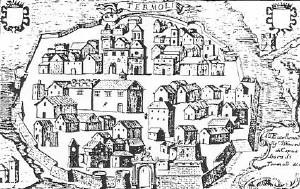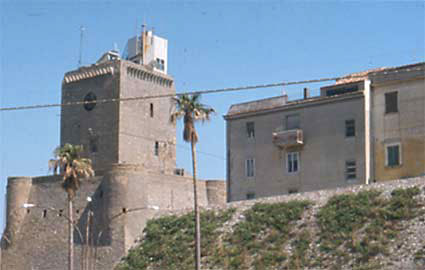 The “paese vecchio” (old village) is
of Medieval origin, while the earlier settlement is located inland. The elements that characterise the city are the castle, the enclosing wall and the cathedral
(documentary records mention other churches). During the Longobard domination it belonged to the Duchy of Benevento and, later, to that of Spoleto. In Norman
times it was part of the County of Loritello. Inside the city there is the palatium of the Loritellos, where king Tancred held a “solemnen curiam”
(1191) to finalise an agreement against Henry VI, who invaded the city three years later. The Swabian interest for the fortified city of Termoli is well
documented by the “Provisores Castrorum” and the “Quaternus de excadenciis”. The castle was repeatedly damaged over the centuries (by the
earthquake of 1456 and during the Turkish attack of 1567, for example). In the Norman period the Longobard tower was reconstructed and integrated in an expanded
defence system. Frederick II of Swabia (1239-1247) set up an excellent defence system, though the city was probably already protected by an enceinte prior to
this. According to the king’s complex military project, the castle was completed, a rampart was erected and the enceinte was reorganised. Recent investigations
have enabled the identification, within the castle, of a central nucleus (a donjon?) incorporated in more recent structures, and along the walls, of the
remains of the gate structure with a steeply escarped wall (like the castle and keep), as well as traces of houses built against the enceinte. The model most
often referred to in conjunction with the tower of Termoli is the palatium of Lucera. The outline of the keep, which stands on a frustum of pyramid base,
is not very common (Arpaia, Adrano, Calascio, Tertiveri and Lucera are the best known examples). The hypothesis that the four corner towers represent an
addition made after the post-earthquake works of 1456 cannot be excluded.
The “paese vecchio” (old village) is
of Medieval origin, while the earlier settlement is located inland. The elements that characterise the city are the castle, the enclosing wall and the cathedral
(documentary records mention other churches). During the Longobard domination it belonged to the Duchy of Benevento and, later, to that of Spoleto. In Norman
times it was part of the County of Loritello. Inside the city there is the palatium of the Loritellos, where king Tancred held a “solemnen curiam”
(1191) to finalise an agreement against Henry VI, who invaded the city three years later. The Swabian interest for the fortified city of Termoli is well
documented by the “Provisores Castrorum” and the “Quaternus de excadenciis”. The castle was repeatedly damaged over the centuries (by the
earthquake of 1456 and during the Turkish attack of 1567, for example). In the Norman period the Longobard tower was reconstructed and integrated in an expanded
defence system. Frederick II of Swabia (1239-1247) set up an excellent defence system, though the city was probably already protected by an enceinte prior to
this. According to the king’s complex military project, the castle was completed, a rampart was erected and the enceinte was reorganised. Recent investigations
have enabled the identification, within the castle, of a central nucleus (a donjon?) incorporated in more recent structures, and along the walls, of the
remains of the gate structure with a steeply escarped wall (like the castle and keep), as well as traces of houses built against the enceinte. The model most
often referred to in conjunction with the tower of Termoli is the palatium of Lucera. The outline of the keep, which stands on a frustum of pyramid base,
is not very common (Arpaia, Adrano, Calascio, Tertiveri and Lucera are the best known examples). The hypothesis that the four corner towers represent an
addition made after the post-earthquake works of 1456 cannot be excluded.
Of the functional elements, traces of the waterworks, service galleries, the drawbridge mechanism and residential rooms are still visible. The military elements
consist in a rich case history of arrow slits, which have often been adapted to more recent functions.
 Il comune informa
Il comune informa 




